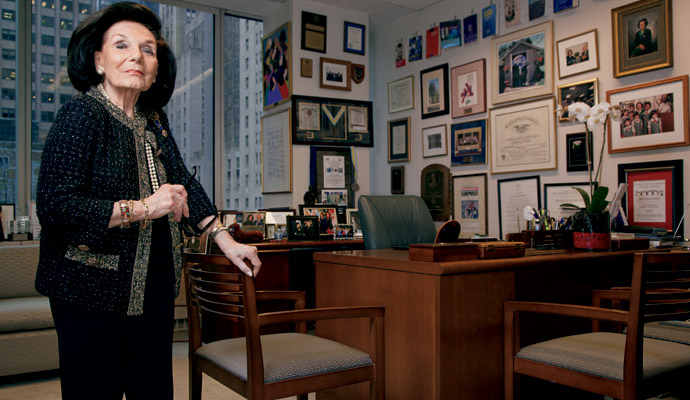Meritocracy without the numbers
The quantitative systems that determine pay for performance rest on a host of unquestioned assumptions.
One of the most encouraging recent management trends has been the move away from rigid, numerically based annual performance reviews, a system whose incoherence David Rock, Josh Davis, and Beth Jones explored in s+b last year. In “Kill Your Performance Ratings,” Rock and his coauthors argued that the ratings cause employee disengagement, instill mental paralysis, and unjustly reduce human qualities to numbers. The trend began in Silicon Valley, but big firms are jumping on the bandwagon — in August, General Electric announced it would abandon the practice for significant parts of its workforce and would experiment with dropping numerical rankings altogether.
This was big news, as GE is the company most associated with total adherence to performance review ratings. Under Jack Welch, GE’s CEO from 1981 to 2001, the ruthless ratings were touted as the key to generating high performance. GE is particularly associated with the much-hated forced (or “stacked”) ranking system: All review scores are plotted on a single bell curve, with the top 10 percent of employees identified as high performers; the bottom 10 percent, tagged as dead wood, were slated for dismissal. Given that this was an annual practice, each year’s “bottom 10” would always have ranked higher in previous years, which meant the company was using the numbers to hollow out its own talent base. Welch, of course, influenced an entire generation of CEOs, many of whom adopted versions of his system, and he continues to vociferously defend it in his retirement.
The long-term strategic problems with this approach were vividly detailed in Kurt Eichenwald’s 2012 Vanity Fair article on “Microsoft’s Lost Decade.” The company, Eichenwald argued, had failed to leverage the world-beating success that characterized its rise through the 1990s in part because of its adoption of a particularly onerous form of ranking: At Microsoft, not only individuals but also teams competed for higher scores, which had the perverse outcome of giving colleagues an investment in one another’s failure. CEO Steve Ballmer’s stubborn adherence to the practice — despite widespread agreement that it was stalling innovation and decimating morale — provides support for David Rock’s thesis that the only people who like the systems are the highly analytical CEOs who initiate them, because numerical ratings promise to reduce the complexities of managing talent to tangible numbers.
As larger companies follow Silicon Valley early adopters in rethinking the wisdom of the annual performance review, the question arises: What might replace it? What might a more human and flexible way of assessing employee contribution and gauging developmental needs look like? As yet, no consensus on this question has emerged.
The big sticking point is the concern that abandoning the process wholesale could make organizations less meritocratic. Speaking at a conference this summer, Kevin Cox, chief human resources officer at American Express, cautioned against letting a popular magazine like Vanity Fair “own the conversation on performance.” Advocates note that rateless approaches require careful consideration based on unbiased research and transparent practice. Indeed, numerical ratings systems were initially seen as a way to assure that employees were treated fairly and to eradicate preferential pay and promotions for individuals with the right connections.
Such concerns compel attention. Yes, it is absurd to assume that everyone’s value can be reduced to a number (a belief that always puts me in mind of the Laputans in Gulliver’s Travels, who roamed the world with measuring sticks with which they sought to gauge all human worth). Still, quantitative rankings gave companies something solid to grasp. Perhaps above all, it gave them both a rationale for and a way to support the practice of paying for performance.
Now widely accepted, pay for performance was originally associated with piecework produced by manual labor — stitch more garments, get paid more — rather than with jobs that required significant thought and were likely to be affected by uncontrollable factors such as luck and timing. Indeed, recent research sponsored by the Boston Federal Reserve suggests that the success of tasks requiring complex cognitive effort cannot strictly be correlated with either motivation or effort. Yet most pay-for-performance schemes are rooted in the belief that money is always the prime motivator behind effort. More intrinsic rewards, such as being part of a successful team or bringing a challenging project or innovative idea to fruition, are assumed by those who hold this view to be secondary to purely monetary rewards.
This focus on pay as the exclusive motivator seems particularly retrograde in light of research suggesting that many women and the younger generation of highly skilled workers place a relatively high value on the quality of their work experience. As a result, they may be less purely motivated by monetary reward. Indeed, GE’s leaders noted that the shifting composition of the workforce was a key reason for rethinking the value of annual reviews.
Despite this emerging shift in the value of ranked performance reviews, the belief in the essential equity, not to mention the efficacy, of pay for performance remains a bedrock of many modern firms. And it’s often a prime reason that companies today are so likely to describe themselves as meritocracies in which anyone with smarts, talent, commitment, and guts can thrive.
Yet the work I’ve done in recent decades with organizations’ diversity efforts suggests that this meritocratic conviction may be something of a blind spot. In fact, the belief that “we are a meritocracy” often exists as an unconscious bias among senior leaders who are firmly convinced that they reached their high position solely because of their performance. Often, they are unaware of how much they have benefited from factors such as a strong cultural fit and support from previous leaders who saw them as being “like me.” In addition, many senior executives interpret their own status and financial success as prima facie evidence that their organization is a meritocracy.
Many senior executives interpret their own status and financial success as prima facie evidence that their organization is a meritocracy.
Simply put, the unquestioning belief in meritocracy can betray a kind of cultural blindness. Therefore, when considering what might replace ratings systems, we should be willing to look at how different sources of motivation reflect the priorities of diverse employees. Doing so will help us start to redefine what a meritocratic organization might really look like.





